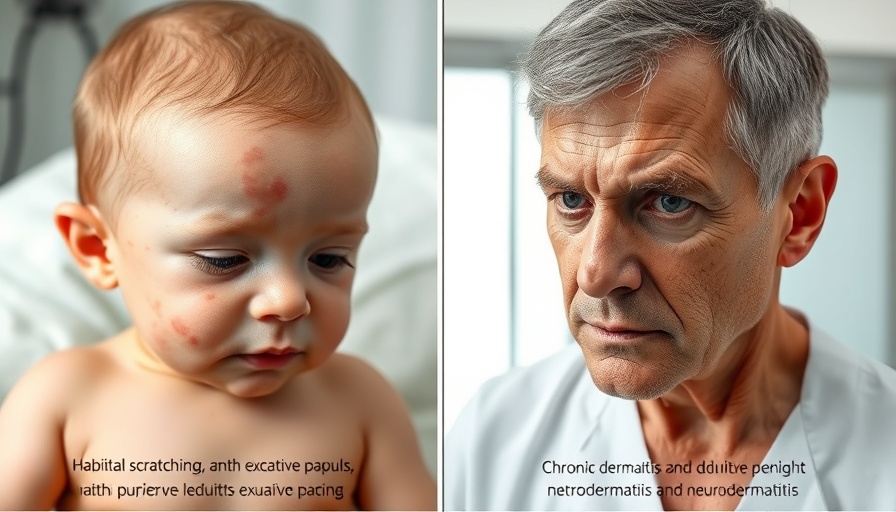
Understanding Habitual Scratching and Its Impact on Atopic Dermatitis
Atopic dermatitis (AD), a chronic inflammatory skin condition, can significantly disrupt patients' quality of life, not only because of visible symptoms but also due to associated behaviors like habitual scratching. Recent studies, including a significant analysis from Japanese health insurance claims and app-based data, have shed light on the prevalence of habitual scratching among sufferers and its correlation with disease severity.
The Link Between Habitual Scratching and Disease Severity
Findings from a cross-sectional study conducted in Japan indicated that up to 44.5% of adults with atopic dermatitis report scratching without feeling itchy. This inclination increases with the severity of the disease; among children, the numbers are even higher, with over 57% admitting to similar scratching behaviors. The research utilized the Patient-Oriented Eczema Measure (POEM) to gauge disease severity and established a clear association between higher POEM scores and increased reports of habitual scratching.
Psychological Considerations and Quality of Life
The implications of habitual scratching extend beyond physical skin damage. According to research, patients exhibiting multiple descriptors of their pruritus, such as burning or stinging sensations, experience a higher impairment in quality of life and increased rates of anxiety and depression. This underscores the multifaceted nature of atopic dermatitis, where not just the skin but also mental health is affected by habitual scratching behaviors.
What Drives Habitual Scratching?
Experts believe that habitual scratching arises from a complex interplay of itch sensitivity and unconscious behavioral patterns. For many, scratching may provide temporary relief or may simply become a subconscious action, even in the absence of itch. Such behaviors can perpetuate a cycle of skin damage and inflammation, making habitual scratching a critical focus of treatment plans.
Management Strategies for Patients and Caregivers
Healthcare providers are encouraged to address habitual scratching when treating patients with atopic dermatitis. Techniques like habit reversal therapy, which emphasizes awareness of the behavior and substituting it with other actions, are suggested as beneficial. Additionally, consistent education about the impact of scratching and cultivating better skin care routines can help mitigate the severity of the condition.
Future Perspectives: Integrating Scratching Awareness in Treatment
As research continues to evolve, understanding habitual scratching's role in aggravating atopic dermatitis may shift treatment paradigms. A holistic approach incorporating psychological support and behavioral therapy could enhance patient outcomes significantly, enabling patients to manage their symptoms more effectively.
Conclusion: Recognizing the Importance of Scratching Awareness
In light of the study findings, recognizing habitual scratching as a behavioral aspect of atopic dermatitis is crucial. By addressing scratching as a symptom worthy of attention, healthcare providers can better support their patients in achieving long-term management of the disease. If you or someone you know is affected by atopic dermatitis, discussing these behaviors with a healthcare provider could pave the way for improved management strategies and overall well-being.
 Add Row
Add Row  Add
Add 




Write A Comment